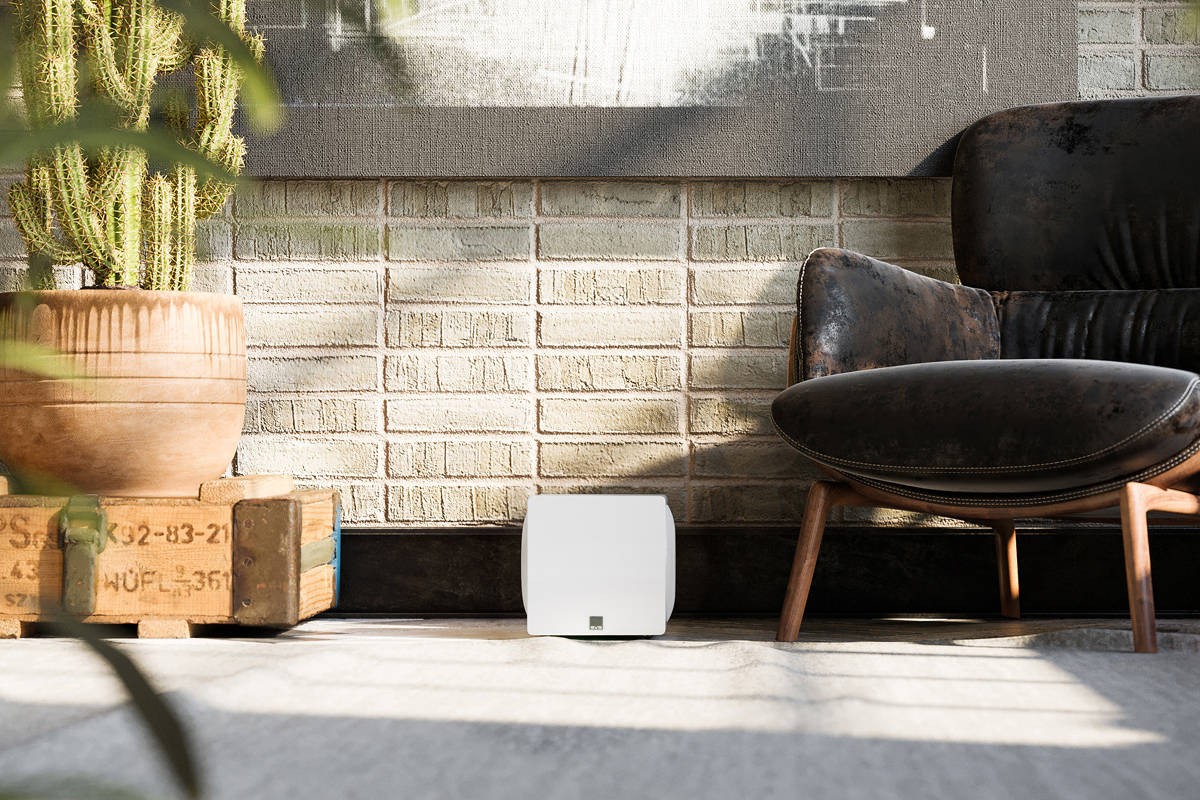 Since mid-2019, I’ve been looking for ways to get better bass from the music system in the living room of the 1920s Toronto rowhouse I share with my infinitely better half. My quest began when I reviewed Elac’s Navis ARF-51 speakers ($4599.96/pair; all prices USD). Those active floorstanders delivered deeper bass and more slam than the active stand-mounted speakers I was using at the time, and I enjoyed them so much I bought the review samples.
Since mid-2019, I’ve been looking for ways to get better bass from the music system in the living room of the 1920s Toronto rowhouse I share with my infinitely better half. My quest began when I reviewed Elac’s Navis ARF-51 speakers ($4599.96/pair; all prices USD). Those active floorstanders delivered deeper bass and more slam than the active stand-mounted speakers I was using at the time, and I enjoyed them so much I bought the review samples.
Then, a year ago, I conducted a little experiment: I compared the sound of my ARF-51s with that of a pair of Elac Navis ARB-51 active stand-mounts ($2299.98/pair) mated to an SVS PB-2000 Pro subwoofer ($899.99). I concluded that the minimonitors-plus-sub combo delivered bass that was deeper, more robust, and better controlled than the Navis floorstanders on their own.
At the end of that experiment, I briefly tried combining the SVS sub with my ARF-51s and really liked what I heard: the bass went lower, and the overall sound was bigger, with greater finesse higher in the audioband. That got me wondering if my future might include a subwoofer. If it did, it would have to be a different kind of sub. At 21″H x 17.4″W x 24″D, the PB-2000 Pro is just too big for our living room.
A few months later, I checked out a custom in-wall subwoofer system comprising two Savant Artison RCC320-Mk2 subs ($1200 each) and two Artison RC1000-SA amplifiers ($1100 each). The Savant system sounded fantastic and took up no room at all—but I wasn’t eager to hack into our walls to install it or anything like it.
Earlier this year, I reviewed Bluesound’s compact Pulse Sub+ wireless subwoofer ($749), which can be mounted on a wall or placed under a piece of furniture. I admired the way two of these blended with my Elac floorstanders. Since then I’ve kept an eye out for other small subs—and in mid-March, when SVS announced their 3000 Micro ($799.99), I immediately requested a review sample.
Inside and out
As its name suggests, the 3000 Micro is small indeed. It measures only 11.7″W x 10.9″H x 10.7″D, including grilles and feet, and weighs 22.5 pounds. Available in Piano Gloss Black or White, it’s also very attractive. The black finish of my review sample was impeccable.
Mounted on the left and right sides of the 3000 Micro are two 8″ woofers, covered by metal grilles. This dual-opposed configuration means that the mechanical energy produced by the two drivers is cancelled out, rather than being transferred to the cabinet. The drivers have vented aluminum cones with aluminum dustcaps, long-excursion inverted parabolic surrounds, and dual ferrite magnets. All of this allows them to deliver high SPLs while maintaining finesse and control, SVS says.
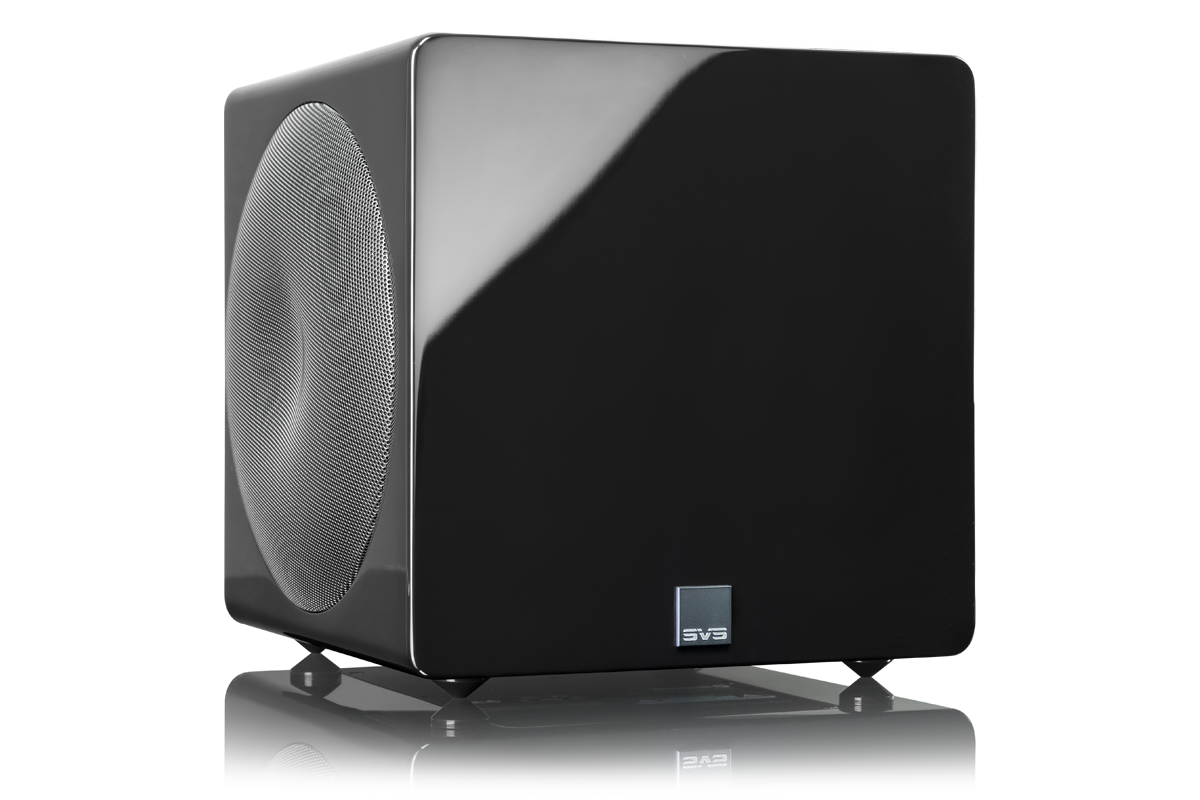
The enclosure is made of “extra-thick” MDF, with substantial internal bracing and absorptive material. The rigid construction suppresses cabinet resonances and, in combination with those opposed drivers, keeps the 3000 Micro from “dancing” across the floor—a problem that, SVS says, afflicts many microsubs, especially single-driver models with passive radiators.
The two drivers are connected in parallel to a monaural Sledge amplifier specified to output 800W RMS and 2500W peak. This amplifier combines a class-D switching input stage that is very efficient, SVS claims, with a fully discrete MOSFET output stage that enables it to deliver very high amounts of current on demand.
The 3000 Micro is controlled by an Analog Devices 50MHz digital-signal-processing (DSP) chip that implements the low-pass filter, optimizes the frequency response to take advantage of room gain, and applies dynamic limiting to optimize the low-end extension and output level.
At bottom right on the 3000 Micro’s rear panel are an on/off rocker switch and a three-prong IEC power inlet, and to their left a 3.5mm trigger input that allows source components with trigger outputs to automatically power up the sub. At bottom left is a USB port for applying firmware updates and for supplying power to accessories such as SVS’s SoundPath Wireless Audio Kit ($119.99), and to its right, line-level output and input jacks (RCA).
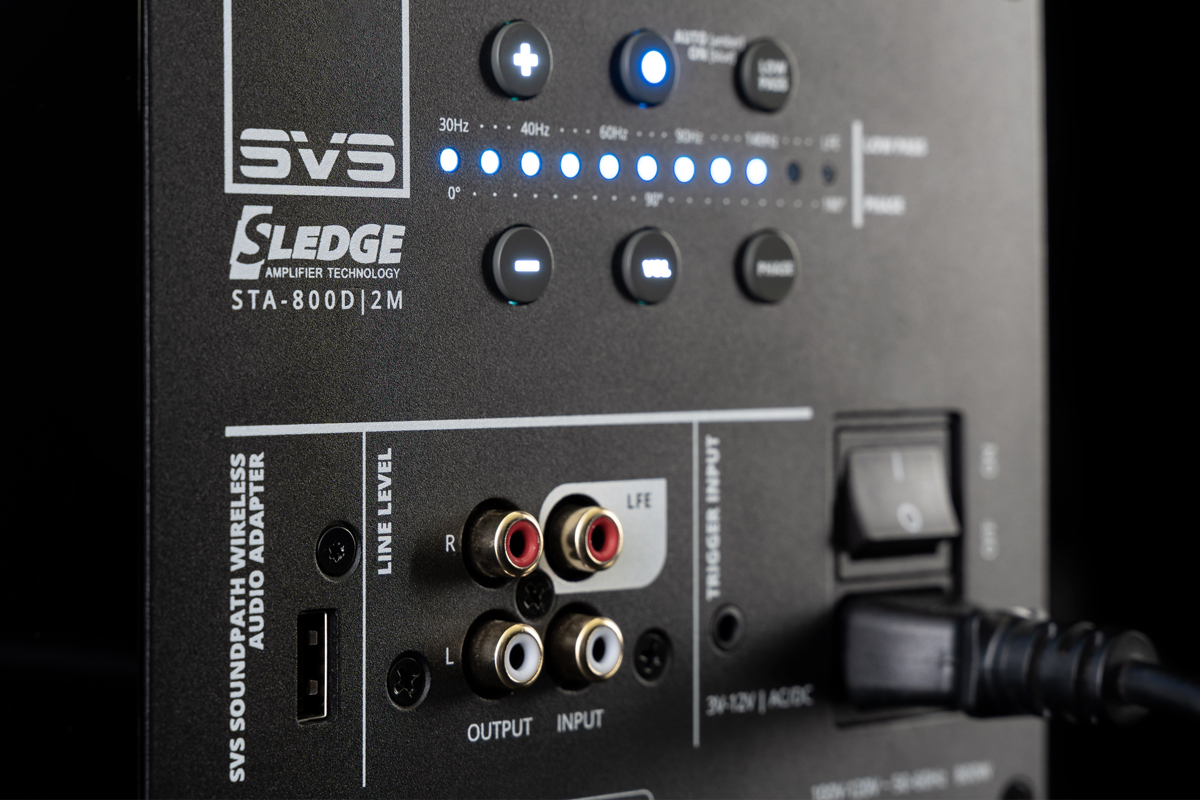
For home-theater use, you’ll likely use a single-cable connection between the low-frequency effects (LFE) jack and the Subwoofer output of your A/V receiver or processor. For two-channel applications, you’ll likely run two RCA cables between the sub’s left and right inputs and the line-level RCA outputs on your amp or preamp. Alternatively, you can use a wireless kit such as SVS’s SoundPath for cable-free connection between source component and sub.
The RCA outputs can also be used for daisy-chaining the 3000 Micro to a second subwoofer, or for connecting powered speakers or an amplifier. Those outputs are not filtered.
Above the jack panel is a control interface that lets users set the 3000 Micro’s level, phase, and crossover frequency, and enable its Auto-on feature; a row of LEDs displays your settings.
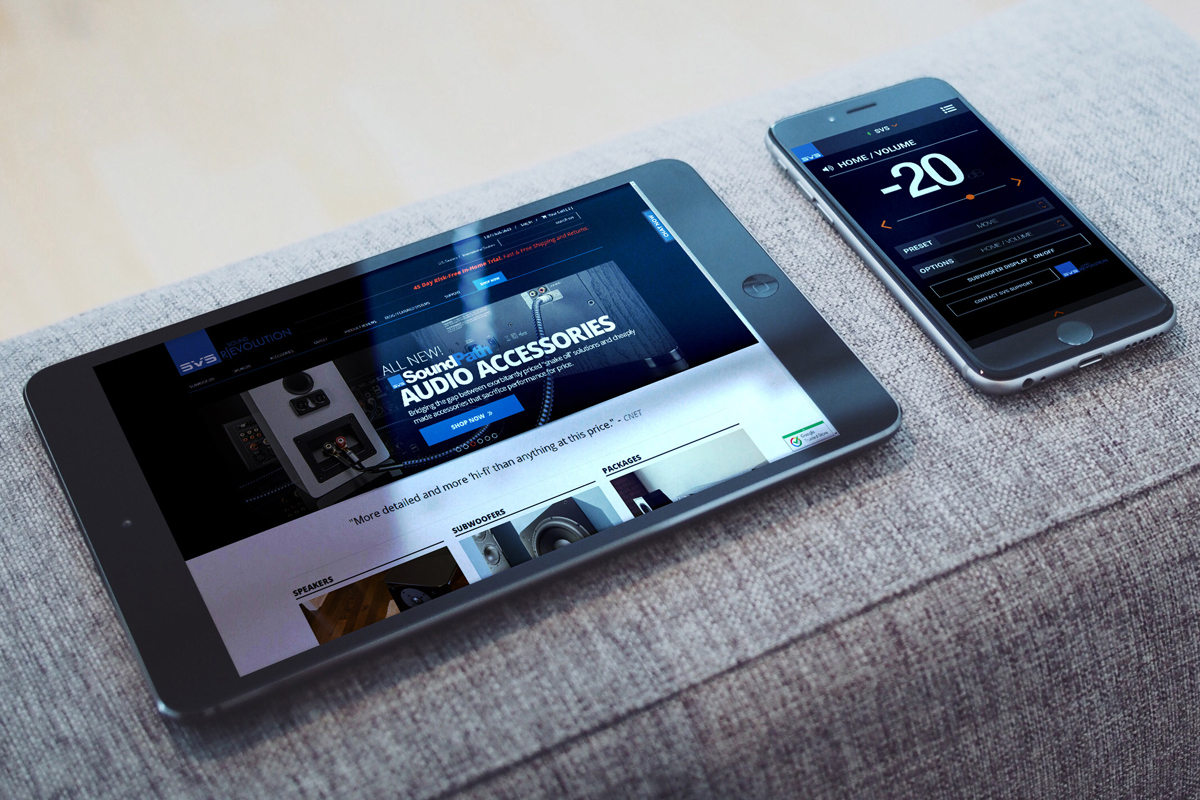
You can also adjust these settings with the SVS app, available for Android and iOS. This app has other settings that aren’t available from the hardware controls, including Room Gain Compensation and Parametric EQ. I found the latter very useful. It lets you apply three bands of equalization for any frequency from 20 to 200Hz in 1Hz increments, with ±12dB adjustment in 0.1dB increments; and Q factor (bandwidth) from 0.2 to 10 in 0.1 increments. Pressing the orange arrow at the bottom of the screen shows a menu with an About This Feature option, which explains how to use the feature selected. When you’ve finished tailoring settings, you can save them as a Preset. The SVS app is slick and well designed; as you’ll read below, I found it very useful.
Setup
I connected the 3000 Micro’s left and right RCA inputs to the unbalanced RCA pre-out jacks of my NAD C 658 streaming DAC preamp ($1649) using 4m AmazonBasics subwoofer interconnects, and the C 658’s balanced outputs (XLR) to the balanced inputs of my Elac Navis ARF-51 active speakers with 6′ and 15′ Benchmark Media Studio&Stage balanced interconnects.
Elac’s Navis speakers have a switchable high-pass filter. If you’re not using a sub, you leave the HP Filter switch in the Flat (full-range) position. But if you’re using a sub, you can engage a high-pass filter centered on 60 or 80Hz. This is really useful, because it means the Navis speakers don’t have to handle deep bass—that’s left to the sub(s) alone. This results in lower distortion and compression, and better clarity in the upper bass and midrange.
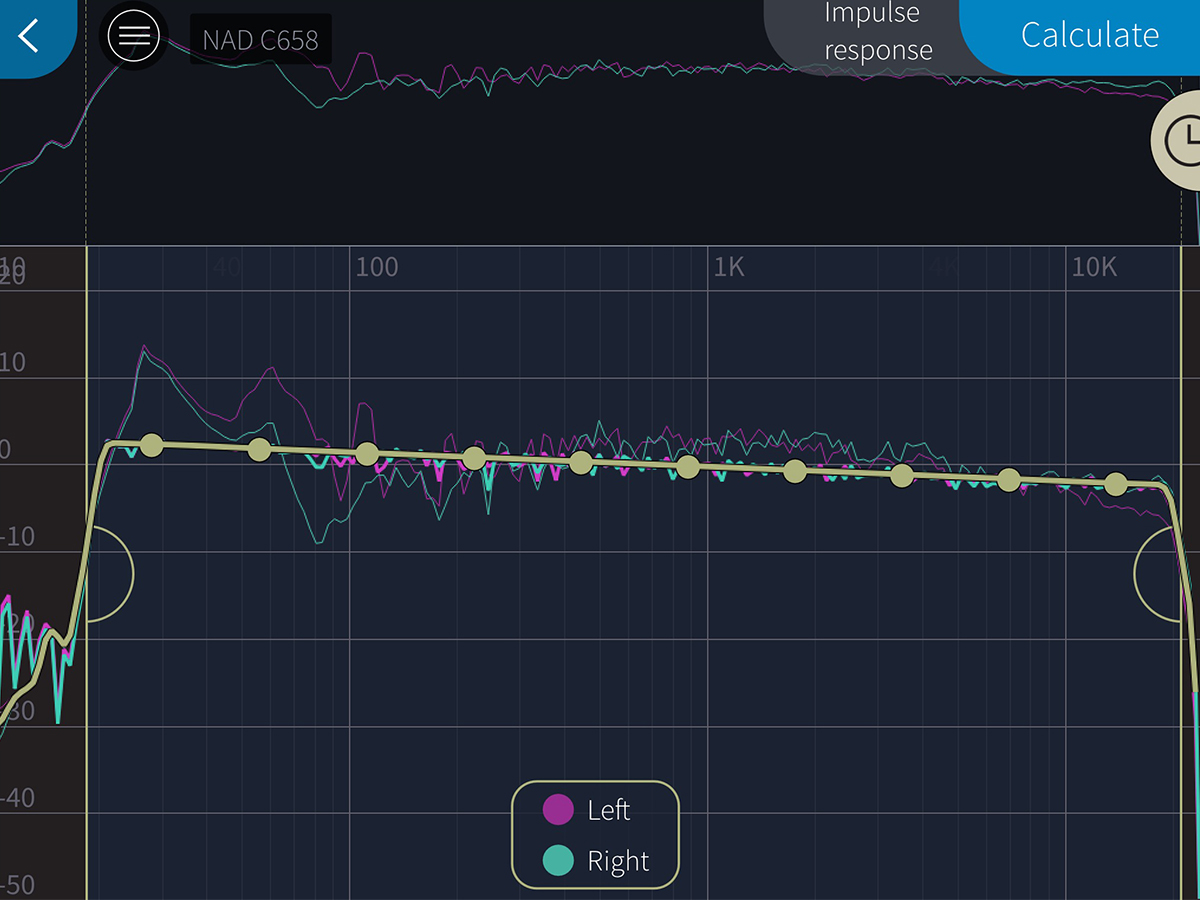
I experimented with the 60Hz and 80Hz settings, each time making sure to set the 3000 Micro’s low-pass filter to the same frequency. I ran Dirac Live room correction on the NAD C 658 for both settings, and saved correction curves for both to my NAD C 658. The curve for the 80Hz setting is shown above. The peaks and dips between 20 and 120Hz don’t indicate irregularities in the SVS sub or Elac active speakers; they’re the result of modes in my listening room, and were smoothed out by the C 658’s Dirac Live room correction.
I heard no significant difference in terms of the blend between the sub and mains with the two crossover settings, and settled on 80Hz for most of my listening. I also experimented with different positions for the 3000 Micro along the front wall of my listening room. I ended up leaving it next to the right-channel speaker, toward the center of the room, as this was the location that worked best cosmetically.
Listening
I began by streaming to the NAD C 658 via Roon a few favorite tracks with demanding bass content. Each time I switched the subwoofer into the system, I had to power up the sub, choose the Dirac Live correction curve I’d created for the Elac-plus-SVS combo in the Audio settings menu of the BluOS app that controls the C 658, and engage the 80Hz high-pass filter on both Elac speakers. When I switched out the sub, I turned the sub’s power switch off, chose the Dirac Live curve for the Elac speakers alone in the BluOS app, and set the speakers’ HP Filter switches to Flat. Each changeover took about a minute.
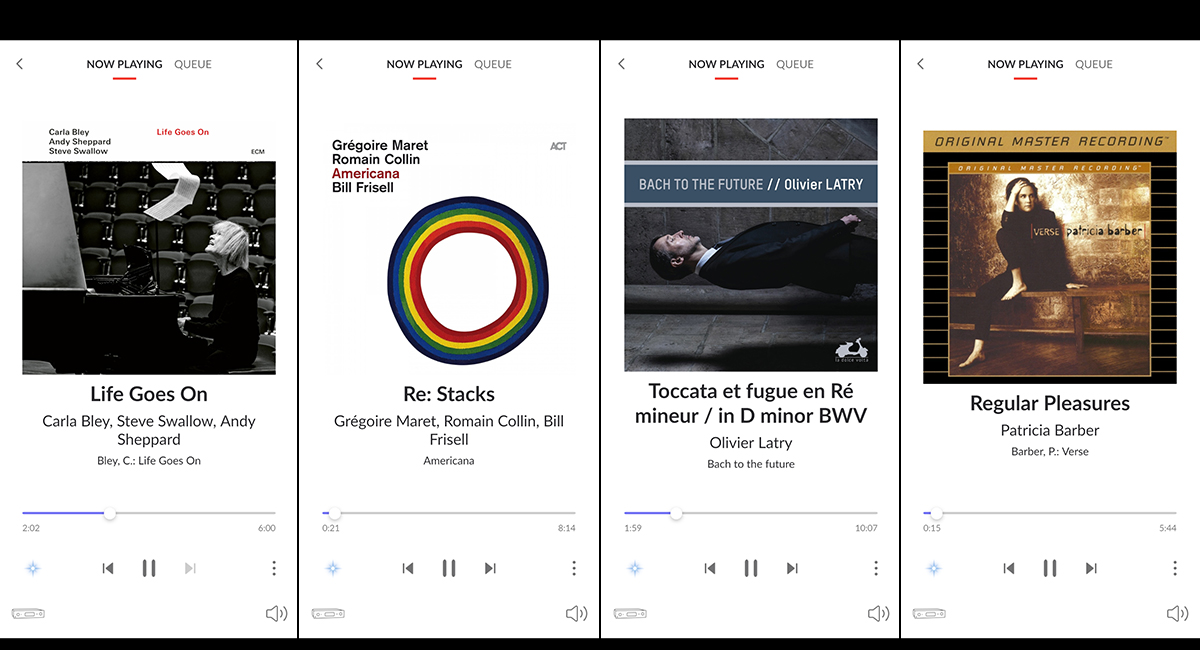
One album I find very useful for assessing bass extension and definition is Life Goes On, by the Carla Bley Trio (24-bit/96kHz FLAC, ECM/Qobuz). Bley’s husband, Steve Swallow, plays a five-string electric bass whose bottom string is tuned to B0 (30.87Hz)—about 10Hz lower than E1, the lowest note on a four-string electric bass guitar or double bass.
The 3000 Micro added more heft to the bottom notes of Swallow’s bass. Through the Navis speakers on their own, those notes sounded fainter. The SVS sub also improved bass texture and definition. On their own, the Elacs clearly presented Swallow’s initial plucks and the ensuing decays when he played the top four strings. But when he plucked the bottom string the sound became a bit muddy and indistinct—attacks were less pronounced. When I switched in the SVS sub, I could hear the attacks of Swallow’s plucks right down to his bottommost notes.
On this album, Swallow’s bass is presented in the left half of the soundstage. But even though the sub was placed beside my right speaker, his bass remained anchored on the left. Other than the additional heft and definition, I was never aware of the sub producing sounds—which, of course, is how it should be.
There were also benefits higher in the audioband. Bley’s grand piano had a bit more weight and authority—not only in the lower register, but in the middle octaves as well.
Another track with lots of bass content is “Re: Stacks,” by guitarist Bill Frisell, harmonica player Grégoire Maret, and keyboard player Romain Collin, from their Americana (24/96 FLAC, ACT/Qobuz). In the middle and at the end of this selection, Collin plays extended passages of very deep notes on a Moog Taurus synthesizer. This track was definitely satisfying without the 3000 Micro, but the sub added a whole new dimension: Those subterranean notes were now more prominent and better defined, with a visceral as well as a sonic quality. They filled my room without overloading it, giving the music a deep, warm foundation. There were other benefits: The sound was bigger, more spacious, more effortless.
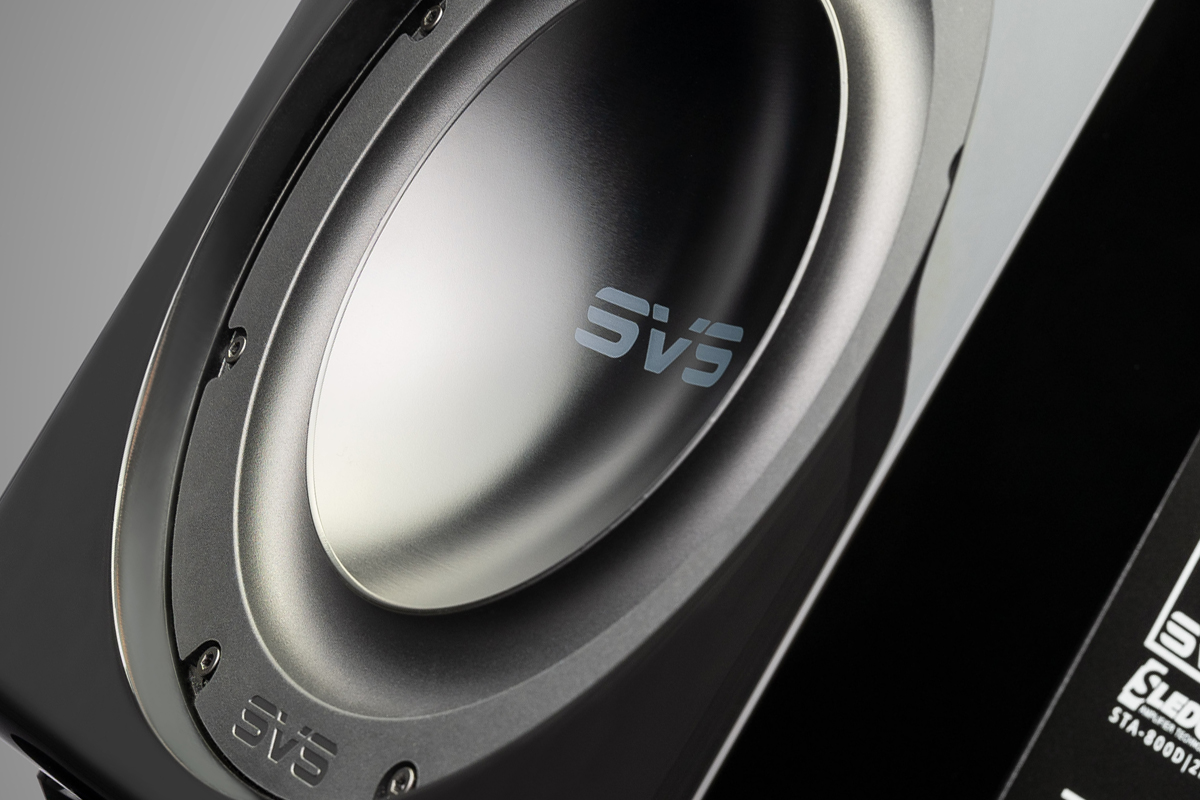
Recordings of pipe-organ music are almost de rigueur in subwoofer reviews, so I cued up J.S. Bach’s Toccata and Fugue in D Minor, BWV 565, from Bach to the Future, by the French organist Olivier Latry (24/96 FLAC, La Dolce Volta/Qobuz)—the last recording made of the grand organ in Paris’s Notre Dame Cathedral before the 2019 fire. Built by the famed 19th-century organ builder Aristide Cavaillé-Coll, this massive five-manual instrument has a huge range of colorful ranks of pipes unavailable in Bach’s time, and 32′ pipes that go down to C0 (16Hz). Latry arranged this masterpiece to take full advantage of the organ’s capabilities.
It sounded mighty impressive through the Elacs on their own, but adding the 3000 Micro really brought out the character of this magnificent instrument. Low pedal notes that had been quite faint when only the Elacs were playing sounded big and majestic when I switched in the 3000 Micro. No surprise there: the ARF-51’s specified frequency range is 43Hz-28kHz. The 3000 Micro’s frequency response is 23-240Hz, ±3dB, which means that it added a full octave of bass extension to my system. The 3000 Micro also reproduced the deepest pedal notes with less growl than I’ve heard from larger subs, including SVS’s own PB-2000 Pro.
With the 3000 Micro filling in that bottom octave, not only were solo pedal notes more prominent—as in the quieter passage after the Toccata’s opening flourish—they were also more audible when underpinning massive rolled chords later in the Toccata and in the dramatic conclusion of the Fugue. Even more significant, those big wall-of-sound passages were more clearly resolved with the 3000 Micro switched in—it was easier to make out various chords, phrases, and ranks of pipes. Those passages sounded a bit mushed-together through the Elacs on their own. And with the SVS in circuit, the sense of space was larger, giving me a more convincing impression of the acoustics of Notre-Dame’s huge sanctuary.
To hear what the 3000 Micro could do for movies, I streamed Sam Mendes’s World War I thriller, 1917, to my Samsung UN55LS003 55″ Frame TV, whose One Connect set-top box was connected to one of the NAD C 658’s S/PDIF (TosLink) inputs.
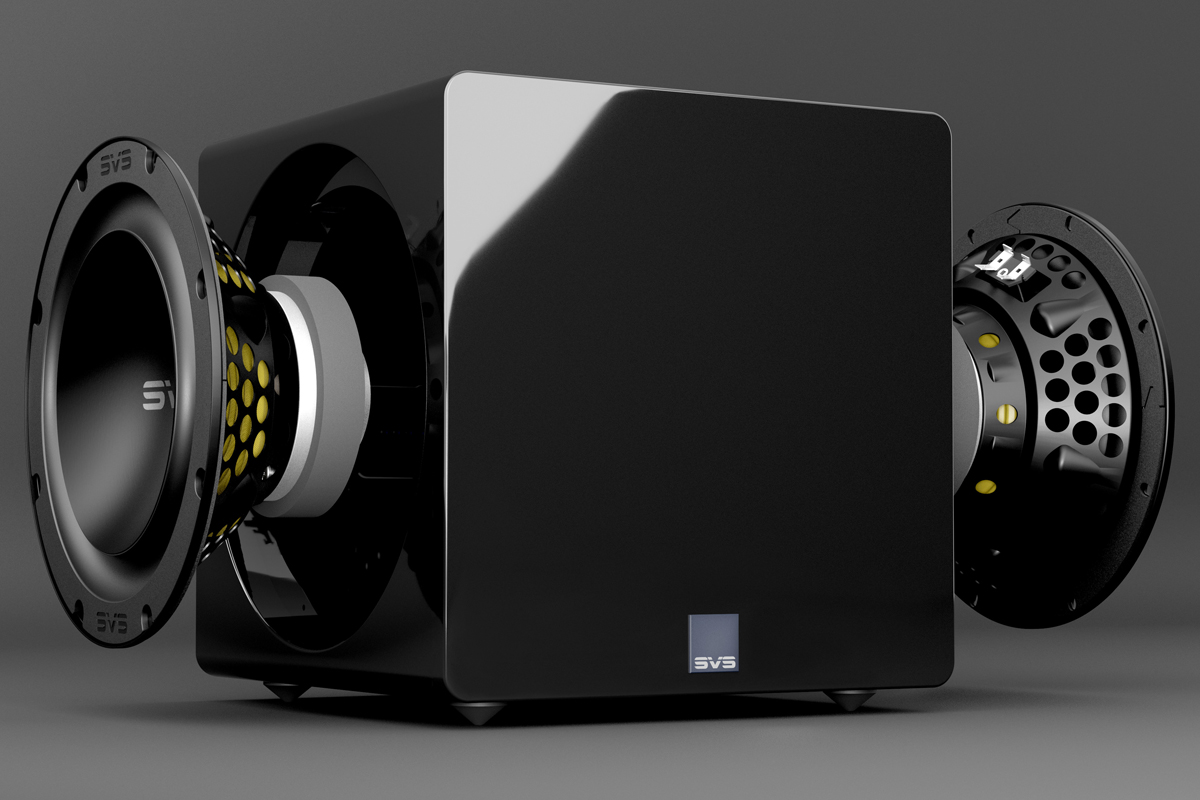
At the 28-minute mark, a rat triggers a booby trap inside the abandoned German trenches. That explosion sounded and felt more powerful with the 3000 Micro than through the Navis floorstanders on their own, and was also better defined. With the sub, I could more clearly hear the echoes of the explosion throughout the network of tunnels, followed by the sounds of collapsing timbers and rocks. I was also more aware of the voices of the two British Lance Corporals echoing through the tunnels.
The SVS sub’s contribution was equally dramatic in the climactic scene near the end of the film, in which a British battalion prepares to stage a doomed attack on German lines. With the subwoofer, the sounds of artillery shells falling on the British trenches had much more impact and were better defined—the impacts were more clearly differentiated from their ensuing echoes and sounds of falling debris. Through the Elacs on their own, the artillery barrage sounded more like an indistinct boom. And again, the illusion of the space presented was larger with the sub in the mix.
Playing with sound
I expect many listeners will use an SVS 3000 Micro with an A/V receiver, nearly all of which include some kind of room correction, which is also becoming available on more and more two-channel components. My NAD C 658 streaming DAC-preamp includes Dirac Live, as do NAD’s Masters M10 ($2749) and Masters M33 ($4999) streaming integrateds, and Arcam’s SA30 integrated ($3000). Lyngdorf Audio’s TDAI-3400 streaming integrated ($6499) includes Lyngdorf’s own RoomPerfect system.
But many will want to use the 3000 Micro subwoofer in a two-channel setup without room correction, and those folks will find the SVS app’s parametric EQ hugely beneficial.
I played the booby-trap scene from 1917 again, this time with Dirac Live turned off. The explosion sounded louder because peaks in my listening room weren’t being corrected, but everything was less well defined. The initial impact of the explosion wasn’t as sharp, and the echoes through the tunnels were boomier and less distinct.
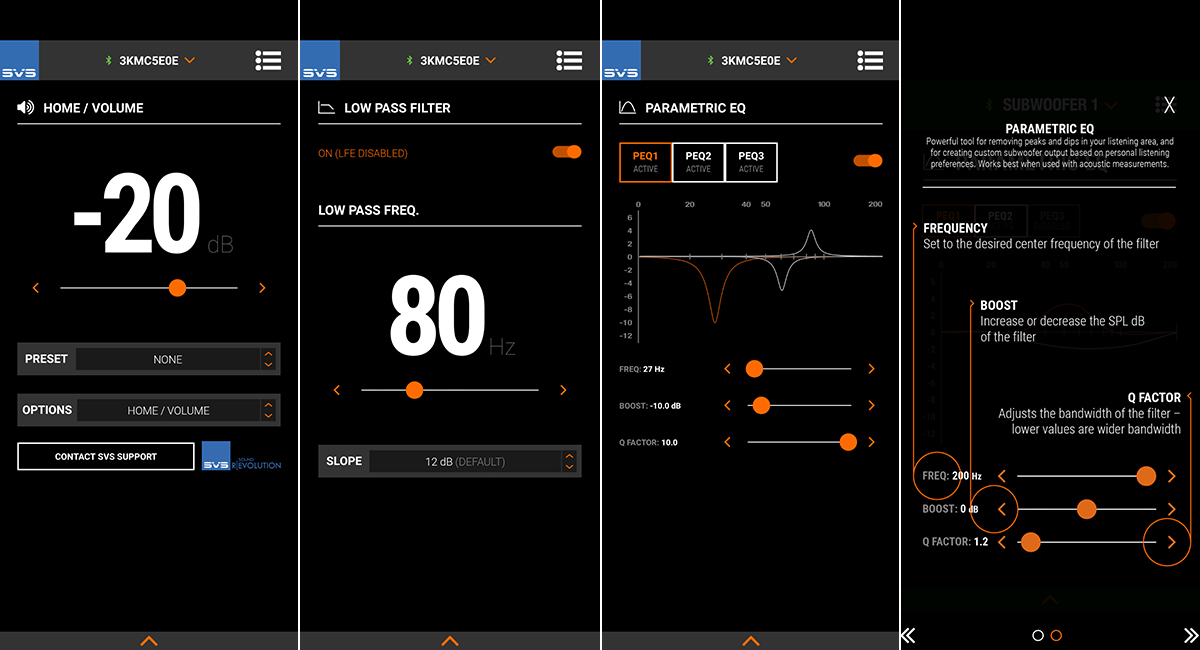
I played the same scene again, this time applying three bands of parametric EQ that I’d implemented with the SVS app—basically, mirror images of the worst peaks and dips identified by Dirac Live. That proved very effective: The explosion’s initial impact sounded as crisp as it had with Live enabled, the echoes and falling debris in the tunnels just as distinct.
I repeated the same exercise with the Carla Bley Trio’s Life Goes On. Without Dirac Live, the lowest notes of Steve Swallow’s five-string bass excited room modes, sounding boomy and indistinct. With Dirac Live, they had more texture and better pitch differentiation. Playing this track without Dirac Live but with the three bands of parametric EQ largely banished the boom and unevenness, and improved bass definition. Naturally, the 3000 Micro’s EQ adjustments couldn’t deliver the greater midrange clarity and improved imaging I enjoy with the full version of Dirac Live—but they did address my listening room’s most serious problems.
Comparison
I compared the SVS 3000 Micro with the new Bass 08 subwoofer from Heinz Electrodynamic Designs ($1199, review pending). The HEDD Bass 08 has an 8ʺ driver with a honeycomb cone powered by a 300W ICEpower class-D amp. On the front are two large ports, for which plugs are also supplied so that the Bass 08 can operate as a sealed system. A switch on the back lets you set its DSP for Closed or Ported operation.
Like all of HEDD’s speakers, the Bass 08 is intended primarily for use in recording studios—its styling is far more utilitarian than the 3000 Micro’s. And at 15.4″H x 11.4″W x 15.75″D, it’s a lot bigger than the 3000 Micro, with twice the internal volume. Visually, the HEDD is less living-room-friendly than the SVS.
The HEDD Bass 08 has AES digital and XLR analog inputs, plus a pair of high-pass-filtered XLR analog outputs. I connected the HEDD’s analog inputs to the XLR line-level outputs of my NAD C 658 using my Benchmark Media Studio&Stage balanced cables, and the sub’s XLR outputs to the XLR inputs of my Elac Navis ARF-51 floorstanders with Argentum Acoustics Mythos balanced interconnects. I then ran Dirac Live twice—first with the Bass 08 in Ported mode, then in Closed mode—and uploaded correction curves for both settings to the NAD C 658.
Another track I often use to assess bass performance is Patricia Barber’s “Regular Pleasures,” from her album Verse (16/44.1 ALAC, Premonition/Blue Note). There’s loads going on in the 32-64Hz octave: Throughout this track, double bassist Michael Arnopol plays a big, bold bass line, mostly on the lower strings, and Eric Montzka adds a huge bass-drum beat at the end of each bar.
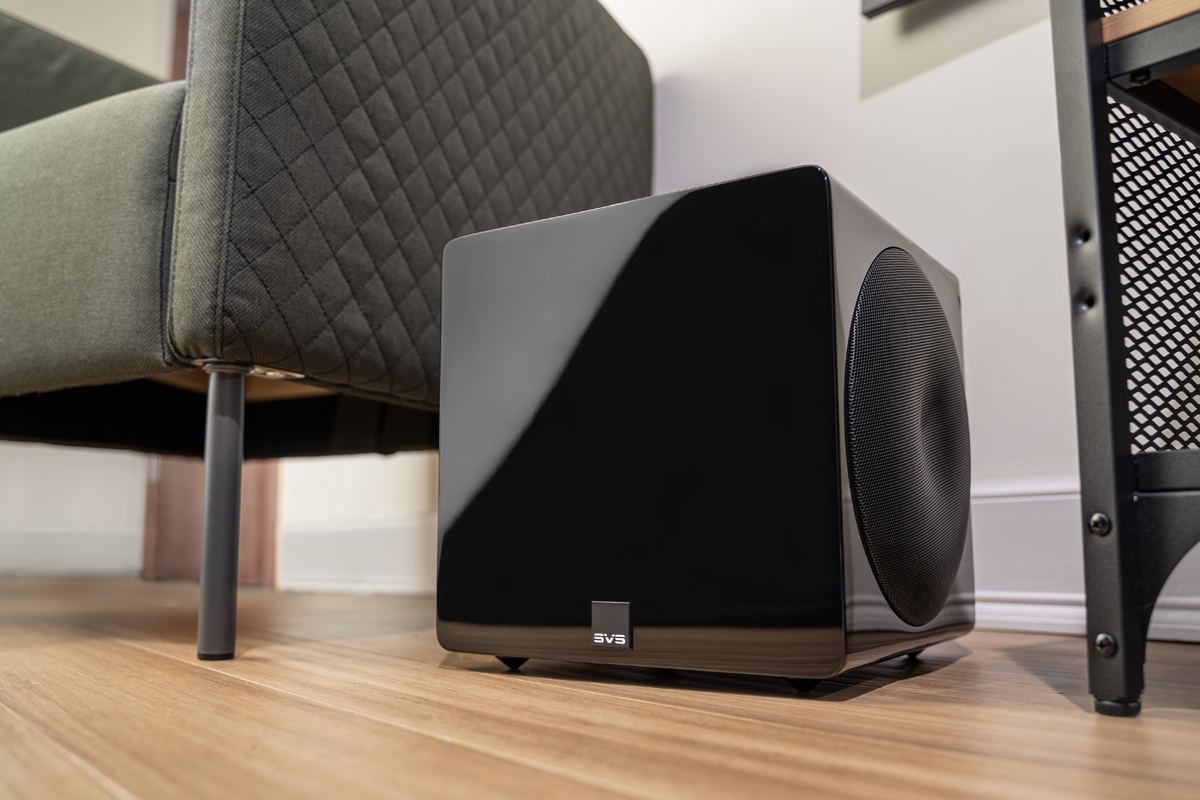
I briefly compared the sound of the HEDD Bass 08 in Ported and Closed modes. Montzka’s bass-drum thwacks sounded a bit bigger and more dramatic in Ported mode, a little better controlled in Closed. Arnopol’s bass had slightly more texture in Closed mode, but sounded fuller and more resonant in Ported. I preferred Ported, and used that mode throughout my comparisons with the 3000 Micro.
Switching between these subs was anything but instantaneous. Each time, I had to move one sub out of the way, move the other into place, reconfigure the sub’s connections between my NAD C 658’s line outputs and Elac speakers’ line inputs, change the high-pass filter settings on both Elacs, and change the Dirac Live setting in the BluOS app. Each swap took the better part of five minutes.
Through the 3000 Micro, Montzka’s bass-drum thwacks sounded a little bigger and more dramatic than through the Bass 08, but with a tad more bloat. Through the HEDD, Arnopol’s bass had more definition and woody richness. While the 3000 Micro’s sound was by no means one-notish, differentiation of notes was slightly better with the Bass 08.
I used Dirac Live room correction for this comparison. Had that feature not been available, I’d have been able to compensate for LF peaks and dips in my room using the SVS app’s parametric EQ function. The HEDD subwoofer offers no such option.
Conclusion
In an introductory video, SVS president Gary Yacoubian says that the 3000 Micro will appeal “to lots more people in lots more rooms” than full-size subs. I think he’s right. The 3000 Micro performed well—remarkably well for its size—and looks great. And SVS’s app is very useful.
Time and again, I was wowed by the bass extension, slam, and low-frequency detail this tiny subwoofer added to my system. It made the sound bigger and more involving, on both movies and music. Keep in mind that I was using the 3000 Micro with a pair of active floor-standers whose bass capabilities are more than respectable. Matched to a pair of minimonitors, I think the 3000 Micro would be transformative.
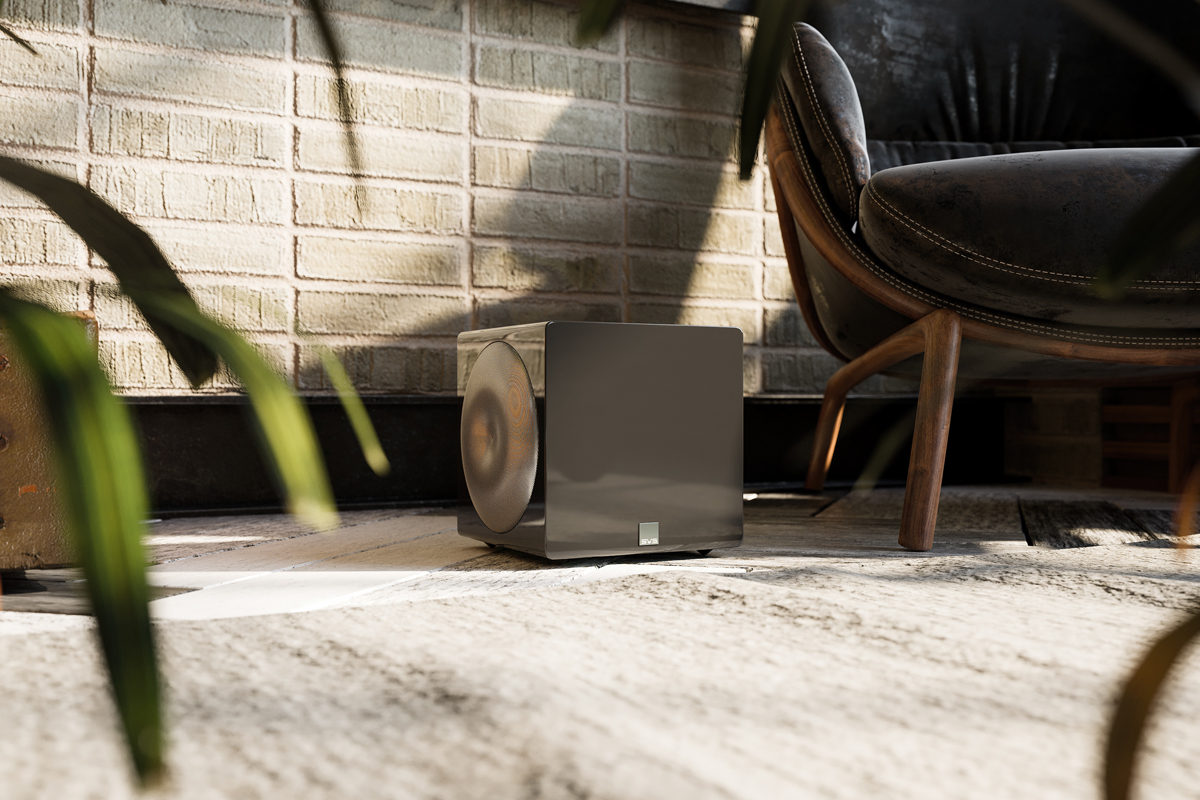
I’ve tried other subwoofers in my home, some of which have delivered deeper bass and better definition in the lowest frequencies. But domestically and/or aesthetically they’ve been nonstarters. Some, like SVS’s PB-2000 Pro, are just too big. Others, such as HEDD’s Bass 08, look too utilitarian. Still others, like Savant’s Artison custom in-wall model, involve too much upheaval.
But for the main-floor living room of my small city home, and for my listening tastes, SVS’s 3000 Micro subwoofer is just right. I’m sure many lovers of music and/or movies will feel the same. A dynamite product.
. . . Gordon Brockhouse
Associated Equipment
- Active loudspeakers: Elac Navis ARF-51
- Active subwoofer: Heinz Electrodynamic Designs Bass 08
- Sources: NAD C 658 Streaming DAC preamp, Samsung UN55LS003 55″ Frame TV
- Interconnects: AmazonBasics subwoofer interconnects (4m, RCA), Argentum Acoustics Mythos balanced (2m, XLR), Benchmark Media Systems Studio&Stage balanced (6′ and 15′, XLR)
- Network: Google Wifi four-node mesh network
SVS 3000 Micro Subwoofer
Price: $799.99 USD.
Warranty: Five years parts and labor.
SVS
260 Victoria Avenue
Youngstown, OH 44515
Phone: (877) 626-5623
Website: www.svsound.com





